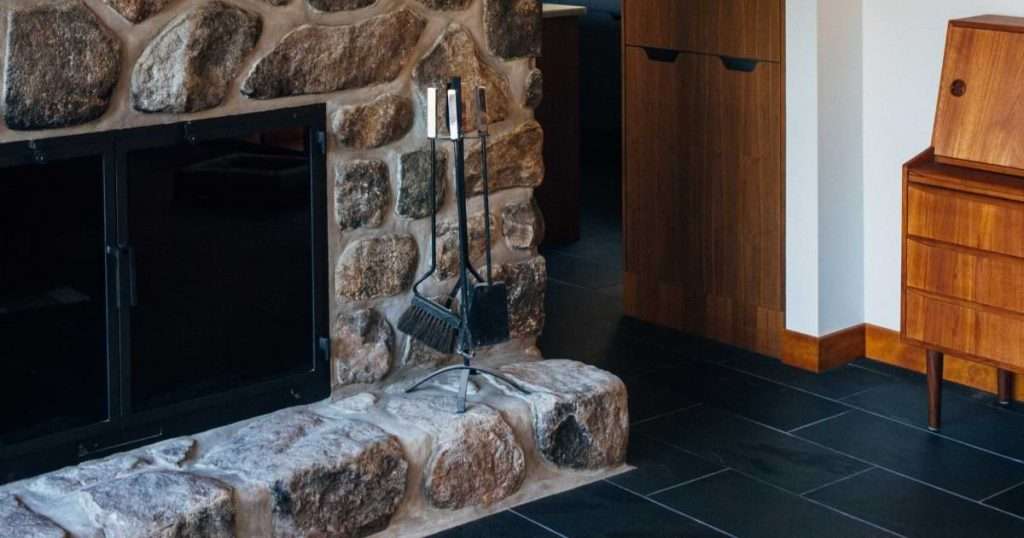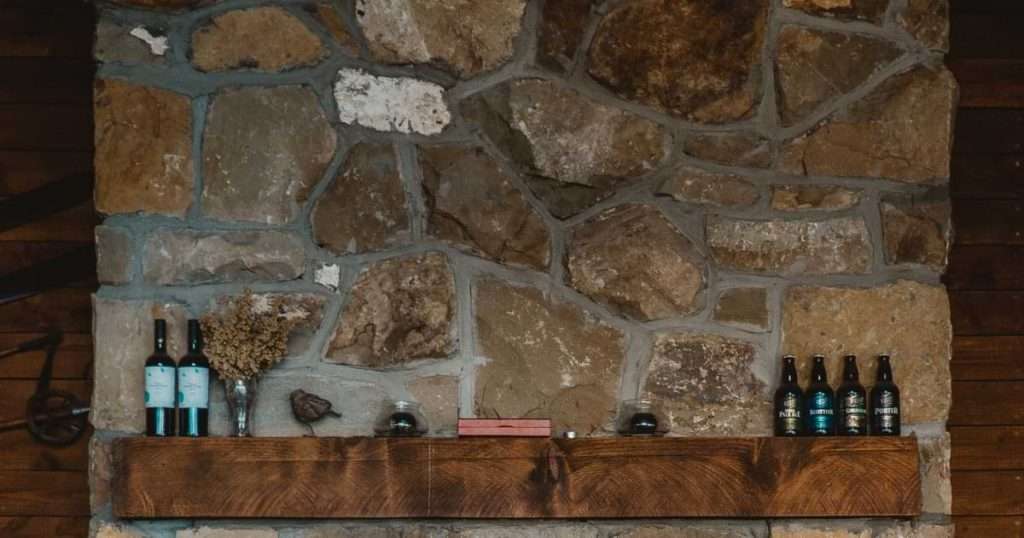Table of Contents
There are many types of german smear stones on the market today, each with its own unique benefits and drawbacks. Some are made from natural materials, while others are man-made.
But what is the reason for the different levels of durability of these German schmear stones? And how can they be treated or prevented from deteriorating prematurely? The answer is surprisingly simple!
In this article, It can easily be seen in a straightforward way just how significant it’s to maintain an aging schmear for a prolonged period of time.
Look into the factors that could lower the longevity of your old schmears, and you’ll quickly realize the easy, long-lasting way you can keep your previous smears looking good much longer.
Let’s get started!
How long does the German smear last?
Well, the type of stone you select and how you care for it affect how long a German schmear can last. Basalt, the climate, and how often it is used are the most common components that determine German smear’s longevity.
In general, though, a German smear can last for 10 to 30 years. And, if taken care of properly, it can be permanent!
German schmear stones have been used for centuries and are still popular today. There are many different types of these stones, but they all share a few common features. They are all made from natural materials, they are durable, and they create a unique finish.
Some of the most popular German schmear stones include granite, marble, limestone, and sandstone. Each type has its own unique properties that make it suitable for different applications.
While choosing the right german smear, granite is a hard, durable stone that is perfect for outdoor use. Marble is a softer stone that is often used for indoor applications because it is more resistant to scratches and staining.
Applying German Smear to Your Fireplace
German smear, when applied to your fireplace, offers a durable and long-lasting finish. The longevity largely depends on the quality of materials used and the application technique. Properly executed, German smear can last for many years, providing enduring beauty and protection to your fireplace.
- Clean Your Brick
To ensure a lasting German smear finish on your fireplace, thoroughly clean the brick surface. Remove any dirt, debris, or previous coatings to create a clean and smooth foundation for the mortar application. This step is crucial for optimal adhesion and longevity of the German smear.
- Mix Mortar in a Wheelbarrow
Mixing mortar in a wheelbarrow allows for convenient and efficient preparation of the material needed for German smear application. Follow the manufacturer’s instructions to ensure consistency and proper bonding with the brick surface. A well-mixed mortar contributes to the durability of the German smear finish on your fireplace.
- Wet Your Walls with a Garden Hose
Before applying mortar for German smear, dampen the walls of your fireplace with a garden hose. Moistening the brick surface helps the mortar adhere better and allows for easier application and manipulation. This step also aids in preventing premature drying of the mortar, promoting a stronger and longer-lasting German smear finish.
- Put Mortar on the Wall
Once the brick surface is prepared and moistened, apply the mortar mixture onto the walls of your fireplace using a trowel or similar tool. Spread the mortar evenly, ensuring complete coverage and a uniform appearance. Proper mortar application is essential for achieving a durable and aesthetically pleasing German smear finish.
- Smooth Out and Clean Off Extra Mortar
After applying the mortar, smooth the surface with a trowel or sponge to achieve the desired texture for your German smear finish. Remove any excess mortar to create clean lines and a polished appearance. This final step enhances the visual appeal and contributes to the longevity of the German smear on your fireplace.
What are the causes of the German smear/schmear?
Schmeared surfaces can be the result of several factors. For example, it is possible that your dog got to your newly polished floors and left muddy footprints everywhere. But these are not typically the main cause of smearing.
The most common cause of schmearing is weathering and aging. When there is precipitation, particularly snow or rain, you will likely see some type of deterioration in the surface of your house or garden. Afterward, you will find that a light top layer has been removed, leaving behind a dark layer. This phenomenon often happens with paint as well as concrete surfaces.
In terms of causes, we can easily rule out weathering and aging as the main causes when considering the reasons for the German smear.
Other potential causes for smearing would include animal traffic such as cows or horses, people walking on a surface before you have finished with it (like if you’re going to paint it), and dogs/pets urinating on a surface as well!

What are the signs of a German smear/schmear?
The most recognizable symptom of a German schmear is the dirty footprints left behind in your house or outdoor space.
Another indicator is a long-lasting, dark brown sludge that builds up on the floor, furniture, or carpet.
If you still can’t tell if your marks are German smears, try scraping some of the sludge off with your fingers to see how it comes off.
How is German smear (schmear) treated?
There are a few ways to deal with the persistent schmears left behind after you’ve been on the go.
- Making them Disappear
The first and most common way to treat german schmears is by making them disappear. For example, a substance called “Rubber-Maid” makes smears vanish in just hours flat.
- Using Vinegar
Another way to get rid of german smears is by using vinegar, which rapidly dissolves any type of dried-up marks or stains.
- Nature’s Miracle
There’s also the option of treating your german schmears with something called “Nature’s Miracle,” which helps eliminate color and odor from carpeting and rugs in minutes!
Of course, don’t worry about it too much if you decide not to take care of them at all and simply want to enjoy their company for as long as possible. While this may seem like a waste of time, these marks will remain for some time. So keep them company while they last!
How can the German smear (schmear) be prevented?
Prevention is the best cure for a smear. Being careful when you walk around your house can help prevent schmears from happening in the first place. However, if you get a schmear, remember it is not the world’s end!
You can do plenty of simple tricks to make your german smears last longer. For example, if your house smells like mold or there are areas where grease has been spilled, it will be hard to keep your german schmears looking as fresh as they did minutes before.
To keep it from being too much of a hassle when you notice these things, just follow these tips:
- If your house smells bad, give it a thorough cleaning before continuing with future schmearing activities;
- Instead of using any kind of oil, use water to clean up spills;
- If you have pets and they continue to mark their territory at home, try using cat litter to cover up their unwanted markings!
What are the Risks of German Smear(schmear)?
A few risks come with leaving muddy footprints around your house.
- First, resist the urge to scrub off the excess mud and dirt before dries. When you wash the area, you’ll remove what makes the german smear marks so good in the first place!
- Secondly, avoid getting too much water on the floor. If your floor becomes too wet, it will absorb some of the mud and ruin german schmears.
- Thirdly, avoid dragging your feet across windows or doors as this will leave streaks on them.
- Finally, be mindful of furniture and other surfaces that may get ruined by excessive dirty footprints.

What factors can influence how long a German smear (schmear) lasts?
A few factors can help you decide how long your smears can last.
- The first and most important is the thickness of the substance you have left on the ground. Thicker substances like mud, clay, or anything with a wet consistency will take longer to dry than thinner substances like flour or sugar.
- It’s also important to consider how much of the substance you are spreading. If you’re covering a small area, it may be harder for this substance to dry out than if you were applying it over a large surface area.
- The other factor that can play an impact is air temperature. If the air temperature is too high, it may be more difficult for german schmears to last as long since they won’t stay in place nearly as well as they would if it was cooler outside.
These three factors can help determine how long your german smears will last, but they aren’t the only ones.
Selecting Optimal Materials for Prolonged Endurance:
The choice of materials plays a crucial role in determining how long a German smear lasts. Opt for high-quality mortar and pigments designed for exterior use and can withstand varying weather conditions.
Look for products with additives that enhance durability and resistance to fading, cracking, and moisture penetration. Investing in premium materials may initially cost more but can significantly extend the lifespan of your German smear finish, ensuring it remains vibrant and intact for years to come.
Effective Surface Preparation Techniques for Durable German Smears:
Thorough surface preparation is essential to maximize the longevity of German smear applications. Clean the brick surface thoroughly to remove dirt, debris, and previous coatings.
Repair any damaged areas and allow them to dry completely before proceeding. Apply a bonding agent or primer specifically formulated for masonry to promote adhesion and prevent peeling or flaking.
Proper surface preparation creates a strong foundation for the German smear, ensuring it adheres securely and withstands the test of time.
Application Methods for Achieving Long-Lasting Results:
Achieving a durable German smear finish relies on employing effective application methods. Use a consistent and even mortar application to ensure uniform coverage across the surface.
Work in small sections to prevent the mortar from drying out too quickly and allow ample time to manipulate the texture. Use tools such as trowels, brushes, or sponges to create desired patterns and textures while ensuring the mortar penetrates the brick pores for a strong bond.
Thoroughly compact and smooth the mortar to minimize the risk of cracks or gaps that could compromise the longevity of the finish.
Impact of Weather and Environment on German Smear Durability:
The prevailing weather and environmental conditions can significantly influence the durability of German smear finishes. Harsh elements such as excessive sunlight, heavy rainfall, freezing temperatures, and high humidity can accelerate wear and deterioration.
In regions prone to extreme weather conditions, consider applying additional protective sealants or coatings to enhance the resilience of the German smear against UV radiation, moisture, and temperature fluctuations.
Regular maintenance, including cleaning and resealing as needed, can help prolong the lifespan of the German smear and ensure it maintains its aesthetic appeal despite environmental challenges.
Sustaining and Cleansing Your German Smear Finish
A. Regular Maintenance for Sustained Elegance
Regular maintenance is key to upholding the timeless charm of your German smear finish. Periodically check for any signs of wear or damage, such as cracks or chips, and address them promptly.
Additionally, gently brush or wipe down the surface to keep it clean from dirt, dust, and debris. Routine inspections and touch-ups can help maintain the elegance of your German smear for years to come.
B. Utilizing Gentle Cleansing Agents for Preservation
When cleaning your German smear finish, use mild and gentle cleansing agents to preserve its integrity. Avoid harsh chemicals or abrasive tools that can damage the mortar or alter its appearance.
Instead, use a soft brush or sponge with a mild detergent solution to gently remove any stains or dirt buildup. You can effectively clean your German smear without compromising its longevity by using gentle cleansing agents.
C. Implementing Preventive Strategies for Extended Lifespan
Consider implementing preventive strategies to prolong the lifespan of your German smear finish. For example, apply a protective sealant or coating to shield the surface from environmental elements such as moisture, UV rays, and temperature fluctuations.
Additionally, consider installing overhangs or awnings to provide extra protection from rain or direct sunlight. By taking proactive measures to safeguard your German smear finish, you can enjoy its beauty for many years.
Repair and Restoration of German Smear: Strategies and Advice
A. Assessing the Damage and Scope of Repair
Before embarking on any repair or restoration work, thoroughly assess the damage and determine the scope of the necessary repairs. Look for areas of deterioration, such as cracks, chips, or discoloration, and prioritize them based on severity. Consider seeking professional guidance if you need clarification on the extent of the damage or the best course of action.
B. Choosing the Right Repair Materials and Techniques
Selecting the appropriate repair materials and techniques is crucial for effectively restoring your German smear finish. Match the mortar color and texture as closely as possible to ensure seamless repairs.
Depending on the extent of the damage, you may need to patch small areas or reapply German smears to larger sections. To achieve optimal results, follow manufacturer guidelines and best practices for mixing and applying mortar.
C. Conducting Regular Inspections and Maintenance
After completing repairs or restoration work, conduct regular inspections and maintenance to prevent future damage and ensure the longevity of your German smear finish. Look for any signs of wear or deterioration, such as new cracks or discoloration, and address them promptly.
Implement preventive measures, such as a protective sealant or coating, to safeguard your German smear against environmental elements. By staying vigilant and proactive, you can preserve the beauty and integrity of your German smear finish for years to come.
Augmenting the Resilience of German Smears with Protective Coatings:
German smear, known for its rustic charm, can maintain its appeal for several years properly. To augment its longevity, applying protective coatings is crucial. These coatings act as a barrier, shielding the smear from external elements such as moisture and UV rays.
By sealing the surface, they prevent premature deterioration and ensure the smear lasts longer. Regular reapplication of these protective coatings, typically every few years, reinforces the defense against wear and tear.
Additionally, opting for high-quality sealants specifically designed for masonry surfaces enhances the effectiveness of this protective layer. With diligent maintenance and periodic resealing, German smears can maintain their aesthetic appeal and structural integrity for an extended period.
Sealant Application for Enhanced Protection:
Enhancing the longevity of German smear involves proactive measures, including applying sealants. Sealants serve as a protective barrier, safeguarding the smear from environmental factors that can compromise its integrity.
By effectively sealing the surface, these products prevent moisture infiltration, primarily contributing to deterioration. Silicone-based sealants, in particular, offer exceptional durability and weather resistance, making them ideal for preserving the appearance of German smears.
Applying sealants to the surface creates a waterproof barrier, ensuring long-lasting protection against water damage and staining. Regular inspection and reapplication of sealants, as needed, are essential to maintain optimal protection and prolong the lifespan of German smears.
Utilizing Silicone-Based Sealants for Added Durability:
When aiming to extend the lifespan of a German smear, opting for silicone-based sealants can significantly enhance its durability. Silicone sealants are renowned for their superior performance in harsh environments, making them an excellent choice for protecting exterior surfaces. Their flexibility allows them to withstand temperature fluctuations without cracking or peeling, ensuring long-term effectiveness.
By forming a resilient barrier over the smear, silicone sealants provide exceptional resistance to moisture, UV rays, and other detrimental elements. This proactive approach to maintenance helps preserve the aesthetic appeal of German smears while reinforcing their structural integrity.
Regular application of silicone-based sealants as part of a comprehensive maintenance regimen can significantly prolong the lifespan of a German smear, ensuring its beauty lasts for years.
Routine Inspection and Upkeep for Prolonged Integrity:
Maintaining the longevity of German smears requires regular inspection and upkeep to address potential issues before they escalate. Periodic inspections allow homeowners to promptly identify any signs of wear, damage, or deterioration.
Addressing these issues early on can prevent further damage and prolong the smear’s lifespan. Routine cleaning is also essential to remove dirt, debris, and organic growth that can compromise its appearance and integrity.
Additionally, scheduling periodic resealing ensures the smear remains adequately protected against moisture and other environmental factors. By incorporating these routine maintenance tasks into a comprehensive upkeep plan, homeowners can ensure the prolonged integrity of their German smear application, preserving its beauty and structural stability for years to come.
Final Thoughts
It is important to be aware of the cause of German smear stone longevity and what symptoms, and prevention can be taken to help increase the chances of its longevity. By following a few simple guidelines in this article, you can help increase the chances of its longevity.
